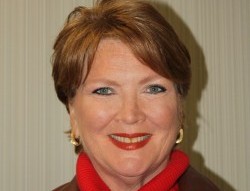By Megan Burks
Covering the basics—a home with running water and working electricity—has gotten increasingly more difficult for San Diego families, especially those in Mid-City.
Residents have endured several years of water rate increases approved by City Council to keep up with increasing costs passed down from suppliers and to pay for needed infrastructure updates. The average household water bill went from $37 in 2005 to $72 in 2010, according to the Investigative Newsource.
Councilwoman and District 9 candidate Marti Emerald was one of two council members to oppose last year’s rate increase. She voted for an increase in 2009.
She and her colleagues are now pressuring the Metropolitan Water District to explain the added costs. MWD supplies water to the City of San Diego, which distributes the water to residents. Its rates have increased 75 percent in six years and could increase again this spring.
Residents could also have to pay more if the city finds it needs additional funds to complete water and sewer infrastructure improvements. In 2007–before Emerald was elected to office–the City Council voted for a series of rate increases that would shore up funds to replace 100-year-old pipes. To date, just 39 of the 111 planned improvements have been completed. Critics, including District 9 candidate Mateo Camarillo, say the backlog points to a lack of oversight and a failure to look out for constituents.
And while the City Council has little control over electricity rates, which are set by San Diego Gas & Electric and watched by the California Public Utilities Commission, residents are looking for leadership there, too. The PUC approved a rate increase in late 2010 to help cover costs associated with the 2007 wildfires. SDG&E is now holding public meetings as it considers asking for higher rates again.
In City Heights, many residents are just scraping by. A few dollars or several dollars added to monthly utilities bills can have a big impact. So this week, we asked the candidates: How would you take care of the current backlog of water and sewer updates, and would you approve new rate increases and/or fees to pay for them? How would you work to stabilize energy costs?
This question is adapted from one proposed by Camarillo. Emerald also had the opportunity to ask a question, but chose not to.
 Courtesy of Mateo Camarillo Courtesy of Mateo Camarillo |
|
 Courtesy of Abigail Santos Courtesy of Abigail Santos |
Mateo Camarillo
Businessman and activist
The San Diego City Council voted several times to raise the rates increasing water and sewer rates promising rate payers that the aging system would be replaced to avoid costly water leaks. A few years later, we discover that only 39 of the 111 water and sewer projects promised to ratepayers that would be fixed have been completed and the City is sitting on hundreds of millions of dollars they collected from rate payers and are also paying interest on bonds sold. The City borrowed money on top of charging rate payers and have not fixed the leaking water pipes. Who is responsible for this costly problem? Why did it happen? What is our neighborhood Council representative doing about this, especially since residents in mid-city and City Heights are struggling to make ends meet and do not need the City to be charging for promises not kept and borrowing money for work not done. The City Council has not been forthcoming and needs to solve these problems on top of the pension problems before they can ask for another rate increase. Unlike our current City Council representative, I would hold City staff accountable and demand answers as to why promises to ratepayers have not been fulfilled. City Council members must be accountable to the voters.
En Español: Los Regidores (City Council members) votaron en varias ocaciones en favor del aumento de tarifas en el costo de agua y drenaje prometiendo a los residentes que con el replazo de tuberias viejas se evitaria el desperdicio de agua por fugas. Pocos anos despues se descubrio que solo 39 de los 111 proyectos prometidos fueron realizados y la ciudad tiene cientos de millones de dollars que colectaron de los consumidores y tambien la ciudad esta pagando miles de dolares en interes que cobran a los consumidores pos el prestamo (venta de seguros de la ciudad) y la ciudad no ha cumplido sus promesas, los regidores no se han reportado con los votantes tocante estos problemas. Quien es responsable de estos costosos problemas? Y como pudo pasar esto si los representantes elejidos estan vijilando como se usa el dinero del pueblo. Esto es su responsibilidad. Que esta haciendo nuestro representante para solucionar estos problemas? Los mas afectados son los residentes de City Heights que no tienen dinero para perder. Los regidores no han sido del todo hornestos con los residentes. Es necesario solucionar estas problemas antes de que se haga otro aumento de tarifas. Yo como regidor exigire que los empleados de la ciudad hagan su trabajo y sean hornestos y exijo respuestas a los promesas hechas a el pueblo.
|
 |
Marti Emerald
District 7 Councilwoman
Serving as a Consumer Advocate for 25 years and currently as a City Councilmember, I have been involved in issues regarding water and electricity costs for years.
I voted against the last round of water rate increases and will continue to oppose these price jumps until Metropolitan Water District (MWD), our major supplier, proves they are not exploiting San Diego consumers. The City is now suing for greater transparency about overhead expenses that are tacked onto the bills from Metropolitan Water.
I continue to work with the San Diego Public Utilities Department to reduce our overhead costs to keep rates down, and insist on using the public utility rate stabilization fund to offset rate increases in the future. The City also must create a rate structure that keeps water affordable for consumers and encourages greater conservation.
There is a great need to stabilize energy costs as soaring gas and electric bills are also taking their toll. Soon after I was sworn into office, I helped to create the Community Cares Project in with the San Diego Food Bank and other groups, offering one stop shopping for utility discounts, pre-registration for CalFresh (food stamps), affordable health care and job training information. We hope this ongoing effort makes the process of saving money and accessing important services easier for struggling families.
En Español: Sirviendo como una Defensora del Consumidor por 25 años y en la acutalidad como Consejal, he estado involucrada en asuntos relacionados con el agua y los costos de electricidad durante años.
He votado en contra de la última ronda de aumentos en las tarifas de agua y seguiré oponiéndome a estas altas de precios hasta que el Distrito de Agua Metropolitano (MWD), nuestro proveedor principal, demuestre que no estén explotando a los consumidores de San Diego. La Ciudad está demandando una mayor transparencia sobre los gastos generals sobre las facturas de Agua Metropolitano.
Sigo trabajando con el Departamento de Servicios Públicos de San Diego para reducer nuestros costos fijos para mantener las tarifas bajas e inisitir en la estabilización de fondos de uso de tasas de utilidad pública para compensar los aumentos de tarifas en el futuro. La Ciudad también debe crear una estructura que mantenga el agua accessible para los conumidores y fomenter una mayor conservación.
Hay una gran necesidad de estabilizar los costos de energía, como el aumento de facturas de gas y electricidad también esta tomando sus efectos negativos. Poco después de que tome este cargo, ayude a crear el project de Community Cares junto con el Banco de Comida de San Diego y otros grupos, que ofrecen una lugar donde pueden encontrar servicios como descuentos de servicios públicos, pre-registración para CalFresh (estampillas de comida), cuidado de salud accessible e información de capacitación de empleos. Esperamos que este esfuezo contínuo haga el proceso de ahorrar dinero y acceso a servicios importantes mas fácil para las familias necesitdas. |
This wraps up our Q&A series with the candidates, but look out for more coverage as the June 5 primary and Nov. 6 general elections approach. You can also expect analysis from Speak City Heights partner voiceofsandiego.org starting this week.
See the candidates’ previous responses on:


